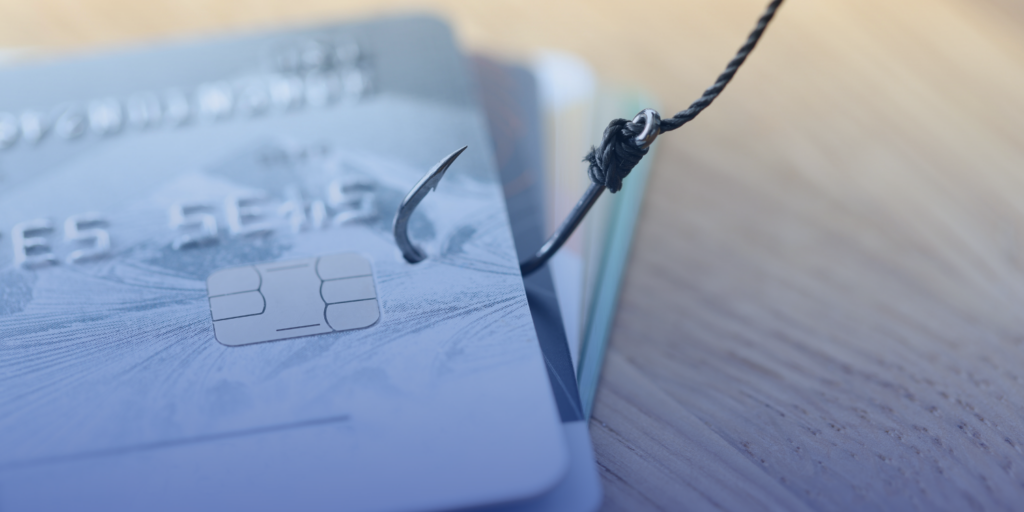The internet has become a shopper’s paradise, offering a vast selection of products at our fingertips and the convenience of delivery straight to our doors. But with this ease comes a hidden danger: fake online shopping scams. This Macropay Scam Alert helps you get a few tips on how to identify and avoid online shopping scams.

How the Scams Work
Fake online shopping scams rely on a simple yet effective tactic: exploiting the desire for a bargain. They advertise popular brands or in-demand items at unbelievably low prices. This strategy preys on our natural inclination to find the best deal, clouding people’s judgment and making them more susceptible to falling victim to the scam. The mechanics of the scam can vary, but here are some common scenarios:
- The Fake Website: Scammers create websites that closely resemble legitimate online stores. They might use stolen logos, familiar layouts, and even have product descriptions copied from real websites. However, upon closer inspection, an unprofessional design, typos, and low-quality images are a sign of an untrustworthy website.
- The New Business: These scams often involve newly created websites with little to no online presence. A quick search on a trusted review site or domain name checker might reveal the website’s young age, raising a red flag.
- The Unreal Deal: The biggest giveaway is usually the price itself. If a brand new designer bag is selling for a fraction of its retail price, or the latest electronics are marked down by an unrealistic amount, it’s a strong sign of a scam.
How the Scams Unfold
- The buyer might receive nothing at all. This is the most common outcome. After taking the money, the scammer simply disappears, leaving people with no product and no recourse.
- The buyer might receive a poor-quality substitute. In some cases, people might receive a cheap imitation of the product ordered, or an entirely different item altogether.
- Buyer’s information might be stolen. Fake websites can be designed to steal credit card information, billing address, and even passwords. This information can then be used for further fraudulent activities.

How to Spot the Scam and Shop Safely
Fortunately, there are ways to identify fake online shopping websites and protect yourself from these scams. Here are some key strategies:
- Shop with Reputable Retailers: Stick to well-known online retailers with a proven track record. Look for established brands with a history of customer satisfaction.
- Do Your Research: Before hitting “buy,” take some time to research the website. Read online reviews on independent platforms, check the website’s domain age, and see if it has a physical address or a customer service phone number.
- Question Unrealistic Prices: If a deal seems too good to be true, it probably is. Deep discounts on popular brands or in-demand items are a major red flag. Trust your gut instinct – if the price feels suspicious, walk away.
- Look for Trust Signals: Legitimate websites will display trust signals like security certificates and logos from verified payment processors. Look for URLs that start with “https://” – the ‘s’ stands for secure. Also, check for a padlock icon in the address bar, which signifies that the site uses encryption to protect your data.
- Be Wary of Social Media Ads: Social media platforms can be breeding grounds for scams. Be sceptical of any ads promising unbelievable deals, especially if they come from unknown or unverified accounts.
- Check for Secure Payment Options: Avoid websites that only offer uncommon payment methods. Secure payment gateways such as Macropay or credit card processors are the norm for legitimate online retailers. These services often provide a way to dispute charges if you don’t receive the goods or services as promised.
A little vigilance can go a long way. Taking the time to research a website and understand the red flags associated with fake online shops can prevent you from falling victim to these scams. Don’t let the allure of a bargain cloud your judgment. By following these tips and shopping with a healthy dose of skepticism, you can navigate the online shopping world with confidence and avoid the “too good to be true” trap.

Macropay regularly updates its gateway and ensures that the technology is well equipped to withstand any breaches. This is crucial as cybercriminals continually search for new methods to compromise the security of payment processors.
If you are looking for a reliable partner that can expand your market reach in Europe and help your business offer a better payment experience, get in touch with our experts.